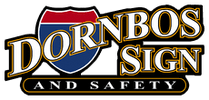Road Sign Symbols and Colors
19th Jan 2018
Symbols have long been used to communicate to drivers on roadways. Symbols offer a universally recognized message and are much quicker to view than words. For maximum safety on the roads in the US, drivers must identify signs during driving tests. Along with symbols, certain colors reflect messaging as well.
What Colors Mean
Colors indicates information on road signs. From a young age, we learn the basics of red, green and yellow. In fact, color is such an influence, we certainly don’t need the word “Stop” on the red octagon. Colors on the background of signs also indicate different warnings or designations. Signs with a white background are regulatory signs, instructing drivers on what to do or not do. Examples include speed limits. Some parking signs on city streets may also have a white background. Any white background sign will either communicate traffic laws, regulations or requirements.
Yellow backgrounds indicate a warning. Green backgrounds inform drivers of permissible traffic movements. When fluorescent, green and yellow stand for pedestrian crossings. Orange is the color of work zones, announcing that a work zone is near and providing instruction to slow down or take other actions. Incident management signage is coral. Blue backgrounds highlight tourism information or attractions, most often on interstates. Brown signs designate areas related to public recreation likes parks or historical features.
What Shapes Mean
Just as color is ingrained in drivers to specify communications, shapes also denote certain situations. The simplest are octagons for stop and inverted triangles for yield. Beyond those shapes, there are additional ones that stand for other messages. Warnings come in the form of a diamond. When rectangular signs have longer horizontal sides, this may indicate guidance to motorists. School zones are announced via pentagons, and a round sign is found at all railroad crossings.
Colors and Shapes Together
When shapes and colors are combined, they create more specific warnings or instructions. These combinations include:
- Red octagons: regulatory
- Yellow diamonds: warnings
- Green rectangles longer on the horizontal side: guidance
- Blue squares: services
- Orange triangles: construction
- Brown squares: recreation
- Fluorescent yellow or green pentagons: school zones
- Coral triangles: incident management
The Future of Colors and Shapes in Road Signs
As roadways become busier and more crowded, there are sure to be changes in the colors and shapes used in road signs. Depending on the evolution of vehicles, there may be new things to communicate. Think about self-driving cars. They are already on the roads. Will future road signs become technologically advanced and join the Internet of Things (IoT) so that self-driving cars can “read” road sign data and take corrective action? The future of road sign colors and shapes is certainly something to have on your radar.




